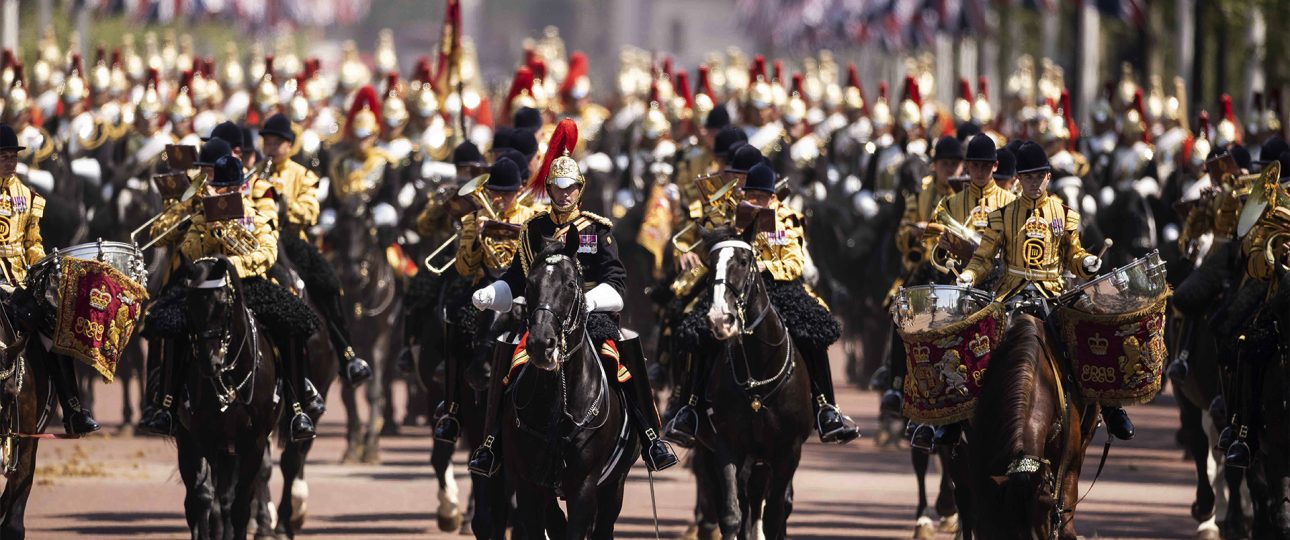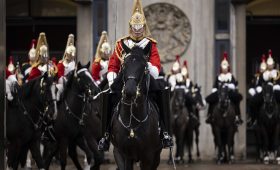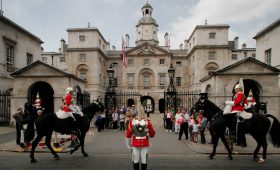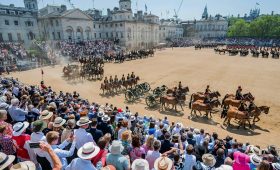The origin story of the first horse guard can be traced back to ancient civilizations, where they were utilized for protection and support of royalty during their travels. The first organized unit emerged in the 16th century in Europe, with members selected for their exceptional horsemanship and military prowess. Tasked with safeguarding royal families, transporting important documents, and defending nations from external threats, the horse guard evolved into a symbol of prestige and honor.
The early roles of the first horse guard, established in 1650, included serving as a mounted infantry unit for the British army, providing protection and support to the king during events and ceremonies, and acting as a mobile quick response force for maintaining order during riots, rebellions, and civil unrest. The unit was reorganized and renamed the Household Cavalry in 1793, consisting of the Life Guards and the Blues and Royals, and continues to serve the British monarchy and support national defense efforts.
The first horse guard was founded in the 16th century by a military leader seeking to create a specialized group of horse-mounted soldiers skilled in combat and ceremonial duties. Key events that led to the creation of this elite cavalry force include the English civil war (1642-1651), the restoration of Charles II (1660), and the need for a permanent and professional cavalry unit to safeguard the monarchy and other important figures.
How Did The First Horse Guard Originate? A Brief History
The first Horse Guard originated as a means to provide protection and support for royalty and important figures during their travels. The concept dates back to ancient civilizations, where mounted soldiers were used to escort and safeguard key individuals.
In the early 16th century, the first organized Horse Guard unit was established in Europe. These units consisted of skilled horse riders and were primarily tasked with safeguarding royal families, transporting important documents, and ensuring the smooth passage of caravans through dangerous territories.

Over time, the Horse Guard evolved into a symbol of prestige and honor, with members often being handpicked for their exceptional horsemanship and military prowess. These units were responsible for defending their nations from external threats, both on the battlefield and in times of peace.
Today, the concept of the Horse Guard continues to be celebrated in various forms, including ceremonial units that serve as a link to the rich history of mounted warfare. These units showcase the time-honored tradition of horsemanship and serve as a reminder of the crucial role that horse-mounted soldiers have played in shaping the world we live in today.
What Were The Early Roles Of The First Horse Guard?
The First Horse Guard, established in 1650, was initially formed to serve as a mounted infantry unit for the British Army. Their primary role was to provide protection and support to the King and other high-ranking officials during important events and ceremonies. Additionally, they acted as a mobile quick response force that could be deployed to quell riots, suppress rebellions, and maintain order in times of civil unrest.
As the years passed, the First Horse Guard evolved and took on new responsibilities. They were trained in the art of warfare and participated in various military campaigns, both at home and abroad. The unit also played a crucial role in the development of modern cavalry tactics, which were later adopted by other nations.
In 1793, the First Horse Guard was reorganized and renamed the Household Cavalry, consisting of two regiments: the Life Guards and the Blues and Royals. Today, the Household Cavalry continues to fulfill its original mission of providing close protection to the British monarchy and supporting the nation’s defense efforts.
In summary, the early roles of the first Horse Guard included serving as a mounted infantry unit, providing protection and support to the King, maintaining order during events and ceremonies, and participating in military campaigns. As the unit evolved, they also played a significant part in the development of modern cavalry tactics and continue to serve the British monarchy and nation to this day.
Who Founded The First Horse Guard And When?
The first Horse Guard, an elite cavalry unit, has an intriguing origin story that dates back to the 16th century. The unit was founded by a visionary military leader who sought to create a specialized group of horse-mounted soldiers that would be highly skilled in both combat and ceremonial duties.
This pioneering figure, whose identity has been lost to the annals of history, recognized the need for a versatile and adaptable cavalry unit that could effectively protect the nation and its interests. The first Horse Guard was established with the purpose of providing a rapid response force capable of both offensive and defensive operations.
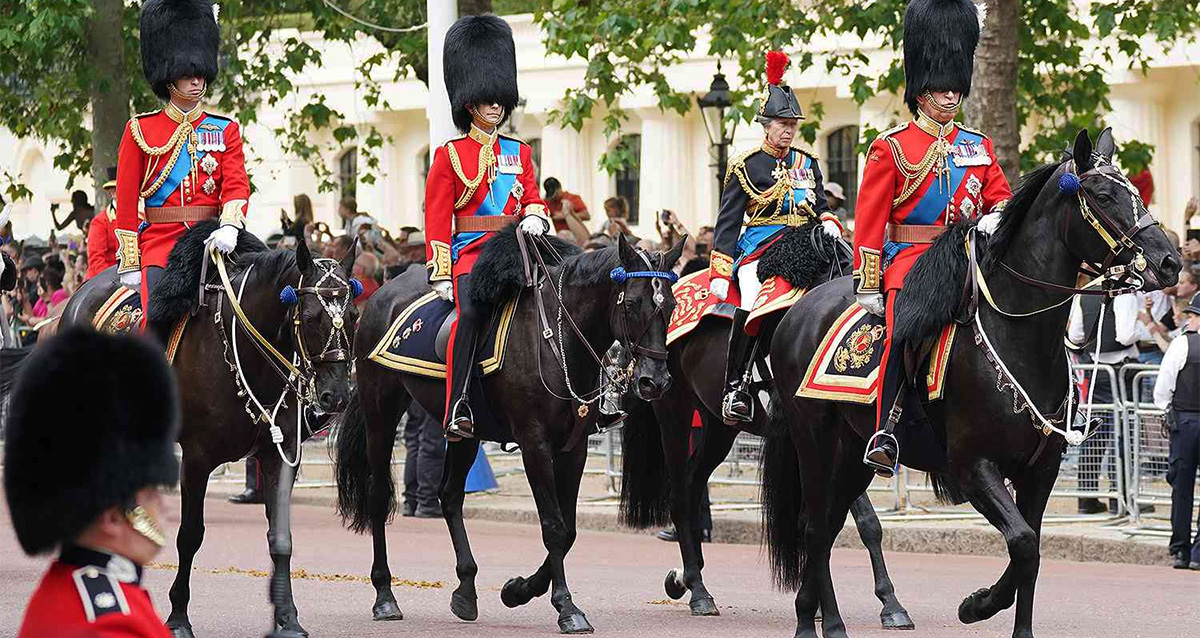
The unit’s founding can be traced back to the year 1530, when the visionary leader first gathered a group of horse-mounted soldiers to form this elite group. Over the years, the Horse Guard has evolved and adapted to the changing needs of the military, but its core mission and purpose have remained the same.
Today, the first Horse Guard is regarded as a symbol of military prowess and tradition, and its legacy continues to inspire and shape the modern cavalry units that have followed in its footsteps.
What Events Led To The Establishment Of The First Horse Guard?
The first Horse Guard was established in 1650 as a response to the need for a specialized military unit that could provide effective protection and reconnaissance for the British Royal Family and other high-ranking officials. The following events contributed to the creation of this elite cavalry force:
- The English Civil War (1642-1651): The conflict between the Royalists and the Parliamentarians greatly impacted the British military landscape. The war highlighted the need for a specialized unit to safeguard the monarchy and other important figures.
- The Restoration of Charles II (1660): With the return of the monarchy, there was a renewed focus on the protection of the Royal Family. This led to the formation of a small group of horsemen, known as the Life Guard, to act as a personal escort for the King and other members of the court.
- The need for a permanent and professional cavalry unit: The experiences of the English Civil War and the subsequent Restoration period revealed the importance of a dedicated, highly trained, and professional cavalry unit. The Horse Guard was created to fill this gap and to provide a strong and reliable defense for the British monarchy and other key figures.
The first Horse Guard was initially composed of 200 men and 200 horses, and their primary duties included guarding the Royal Family, providing reconnaissance during military campaigns, and participating in ceremonial events. Over the years, the unit has evolved and grown in size and importance, becoming a symbol of the British military and its long-standing commitment to protecting the monarchy.
